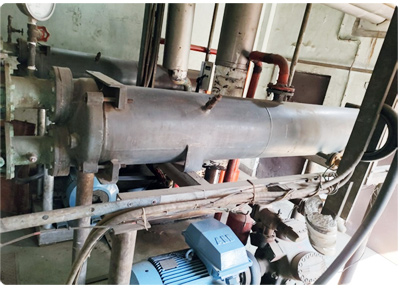Heat Exchanger
Heat Exchanger
 Among the most common types of heat transfer equipment used in industrial applications are the various configurations of shell-and-tube heat exchangers. Suitable for a range of pressure and temperature conditions, shell-and-tube heat exchangers can be robust enough to handle corrosive or even lethal fluids.
Among the most common types of heat transfer equipment used in industrial applications are the various configurations of shell-and-tube heat exchangers. Suitable for a range of pressure and temperature conditions, shell-and-tube heat exchangers can be robust enough to handle corrosive or even lethal fluids.
The shell-and-tube heat exchanger design allows heat transfer between two independent, pressurized chambers through the wall of the tubes. The design consists of an array of tubes, which is connected on each side to a flat plate called a tubesheet. The tubesheet also separates the shell and tube sides of the exchanger. Baffles on the outside of the tubes direct the flow of the shell-side fluid back and forth across the tubes to promote heat transfer. The process fluid can flow through either the shell or tube side, with the opposite side typically acting as the service side (usually a heating or cooling medium). The exchanger also can have a process fluid on both sides.
Straight-Tube, Fixed Tubesheet Type Heat Exchangers
Straight-tube, fixed tubesheet heat exchanger types are the most common and, generally, least expensive designs.
One disadvantage of these designs is that the tube bundle section is not removable; therefore, the shell side cannot be cleaned easily. This can be an issue if the shell-side fluid causes frequent fouling or sediment buildup. Another disadvantage is that the tubesheets are fixed, which causes stresses in the unit due to differential thermal expansion between the tubes and shell. An expansion joint sometimes is required to relieve this stress, but its addition can increase the overall cost.

Removable U-tube Bundle Types
Benefit with the U-tube configuration is that the tubes can expand and contract freely with temperature differences without causing stress in the shell. The tubes can even expand individually at different rates without any detrimental effects. Expansion joints are never needed with these designs. The bundles can be replaced relatively easily if necessary.
One potential disadvantage to selecting this type of heat exchanger is that it can be hard to clean the inside of the tubes, especially in the bent portion. Removable bundles are not recommended over about 36” diameter because these tube bundles are heavy and difficult to remove and install.
